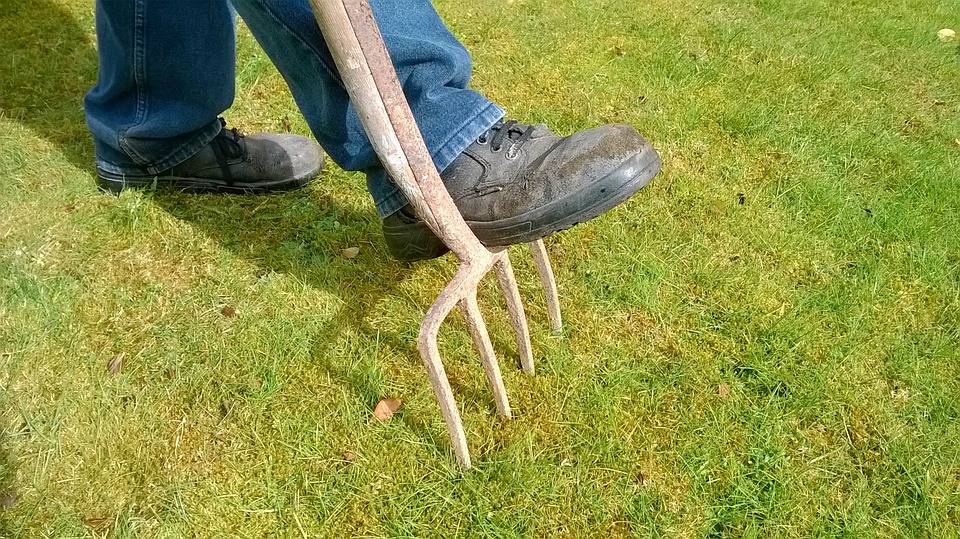
In many parts of the country, the lawn is simply frozen tundra right now. Or perhaps you’re lucky enough to skip snow and enjoy a frost-free winter. Wherever you live and whatever the current state of your lawn, it’s never too early to think about when to aerate it.
Now, there seem to be two types of people when it comes to aeration. The first is probably wondering what in the heck aeration is and why it needs to be done. The second group already know what it is and hires pros like the ones at Lawn Love to take care of it — because it sure can be a lot of work. Whichever group you belong in, it will still pay to know when your lawn is due for aerating. So sit back, relax, and enjoy this week’s blog about the finer points of lawn aeration.

Protect Your Turf
There are two different types of grasses used in lawns: cool-season grass and it’s snowbird cousin warm-season grass. The cool-season grasses begin to come out of dormancy in early fall and develop best at lower temperatures. One of the most important things to know about aeration is that it should be done prior to the season when your grass will have the most rapid growth. So, for cool-season lawns, it’s going to be best to aerate in the fall so the holes created by aeration call fill in. But you have to be careful about timing with cool-season grass aeration because it needs to be done about a month prior to the first frost.
For warm-season grasses, the opposite is true. These grasses will see their most rapid growth in the late spring or early summer, so aerating right before the growth period in the spring will be the best time.
Let us break it down for you a bit easier. Do you know what type of grass you have growing in your lawn? If it’s one of these, you need to aerate in the late spring or early summer:
- Bermudagrass
- Centipede grass
- Augustinegrass
- Zoysia grass
- Bahia grass
- Buffalo grass
These types of grasses will need aeration in the fall prior to the first frost:
- Rough bluegrass
- Creeping bentgrass
- Fescue
- Ryegrass
- Kentucky bluegrass
Don’t Forget About the Soil
Different types of soil also need to be considered when thinking about aeration. For example, soil with a heavy clay component compacts easily, so it needs to be aerated at least once a year. A sandy soil will require less aeration, perhaps every other year (though it can be done yearly). If you live in an arid climate, then you may need to aerate twice a year to help keep your lawn healthy. And if you have a lawn that sees a lot of traffic, yearly aeration isn’t a bad idea either. So many things to consider!
A Few Tips on Timing
There are a few other important details to know about timing when it comes to aeration. You should:
- Treat the lawn for weeds before aerating
- Fertilize or reseed just prior to aerating
- Wait a year before aerating newly established lawns
- Aerate when the soil is moist but not completely saturated with water
- Avoid aerating when it’s very hot out or you’re experiencing a drought
So, there you have it! Now you have to decide if you’re going to tackle aerating your lawn yourself or get the experts from Lawn Love to come and tackle it for you!